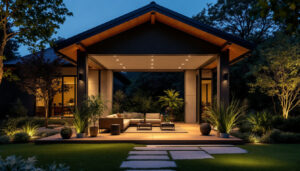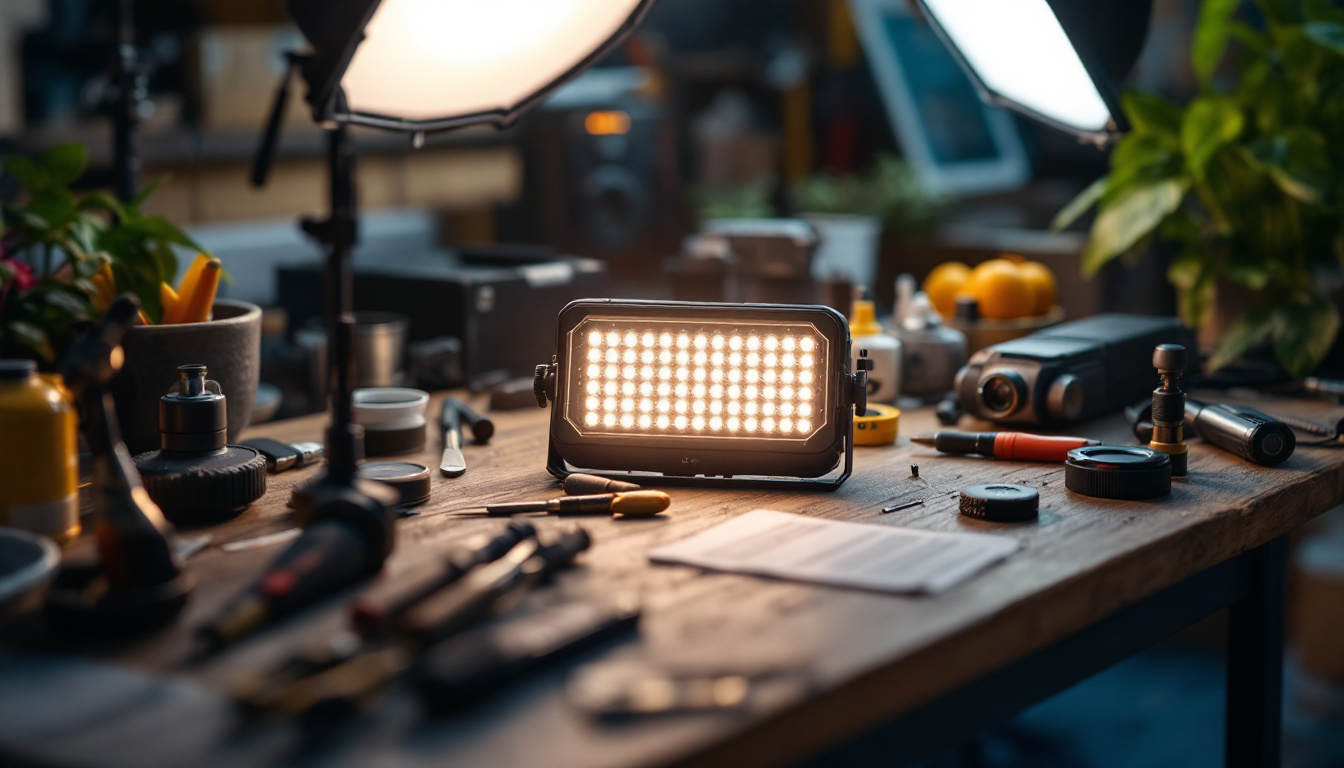

In the ever-evolving world of lighting technology, LED conversion kits have emerged as a critical solution for lighting professionals. With the growing demand for energy-efficient lighting solutions, these kits provide an excellent opportunity for contractors to enhance their service offerings. This article serves as an essential checklist for lighting professionals looking to navigate the complexities of LED conversion kits effectively.
LED conversion kits are designed to replace traditional lighting systems with energy-efficient LED technology. These kits typically include all necessary components for a straightforward installation, allowing for a seamless transition from older lighting systems to modern LED solutions. Understanding the components and benefits of these kits is crucial for lighting professionals aiming to deliver high-quality service.
Typically, an LED conversion kit comprises several key components:
Each component plays a vital role in ensuring the longevity and effectiveness of the lighting solution. Understanding these elements allows contractors to make informed decisions about the kits they choose to work with. Additionally, many kits now come with user-friendly installation guides or even video tutorials, which can significantly reduce the time and effort required for installation. This is especially beneficial for DIY enthusiasts or smaller contractors who may not have extensive experience with electrical systems.
Switching to LED lighting offers numerous advantages, including:
These benefits not only enhance the appeal of LED conversion kits to clients but also position lighting professionals as forward-thinking contractors who prioritize sustainability and cost-effectiveness. Furthermore, the versatility of LED technology allows for a wide range of applications, from residential to commercial settings. For instance, in commercial spaces, the ability to dim LED lights or change their color temperature can create dynamic environments that enhance productivity and comfort. This adaptability makes LED conversion kits an attractive option for businesses looking to improve their lighting while also saving on operational costs.
Before diving into the installation of LED conversion kits, several key considerations must be addressed. These factors can significantly influence the success of the project and ensure client satisfaction.
One of the first steps in the conversion process is to assess the existing fixtures. This involves:
By thoroughly assessing the existing fixtures, lighting professionals can avoid potential pitfalls during installation and ensure a smooth transition to LED technology. Additionally, it’s important to consider the age and condition of the fixtures. Older fixtures may have wear and tear that could affect the performance of new LED components. Inspecting for any signs of corrosion, damage, or outdated wiring can provide insights into whether a simple conversion is feasible or if a complete fixture replacement might be necessary. This proactive approach not only enhances the longevity of the installation but also maximizes energy efficiency.
Another crucial aspect to consider is local regulations regarding lighting installations. Many regions have specific codes and standards that must be followed, particularly when it comes to energy efficiency and safety. Familiarizing oneself with these regulations can help avoid costly fines and ensure compliance with industry standards. In addition to local building codes, it’s also wise to stay informed about any incentives or rebates available for energy-efficient upgrades. Many municipalities offer financial benefits for switching to LED lighting, which can significantly offset installation costs and encourage clients to embrace sustainable practices.
Setting clear expectations with clients is vital for a successful project. Lighting professionals should take the time to educate clients about the benefits of LED technology, the installation process, and any potential disruptions. This transparency fosters trust and helps clients feel more comfortable with the transition. Moreover, discussing the long-term savings associated with LED lighting can be a compelling selling point. Clients may be surprised to learn that while the initial investment might be higher than traditional lighting, the reduced energy consumption and longer lifespan of LEDs can lead to substantial savings over time. Providing case studies or testimonials from previous clients who have made the switch can further reinforce the advantages and help clients visualize the positive impact on their spaces.
Once all considerations have been addressed, the installation process can begin. Adhering to best practices during installation not only ensures safety but also enhances the performance of the new LED lighting system.
Safety should always be the top priority during any installation. Here are some essential safety tips:
By prioritizing safety, lighting professionals can protect themselves and their clients, ensuring a smooth installation process.
Wiring is a critical aspect of any lighting installation. Following proper wiring techniques is essential for the longevity and efficiency of the LED system:
Proper wiring not only enhances the performance of the LED system but also minimizes the risk of electrical issues down the line.
After installation, testing the system is crucial to ensure everything functions correctly. This involves:
Quality assurance is a vital step that can significantly impact client satisfaction and the reputation of the lighting professional.
Once the installation is complete, there are several post-installation considerations that lighting professionals should keep in mind to ensure ongoing client satisfaction and system performance.
Educating clients about the importance of regular maintenance can help prolong the life of their new LED systems. This may include:
By providing clients with maintenance tips and support options, lighting professionals can enhance their service offerings and build long-term relationships.
Gathering feedback from clients post-installation is essential for continuous improvement. This can be done through:
Feedback not only helps identify areas for improvement but also provides valuable testimonials that can be used to attract new clients.
The world of LED lighting is constantly evolving, with new technologies and trends emerging regularly. Staying informed about these trends can help lighting professionals remain competitive and offer cutting-edge solutions to their clients.
One of the most significant trends in lighting is the integration of smart technology. Smart LEDs allow for:
As more clients seek smart solutions, lighting professionals should consider offering smart LED options as part of their service portfolio.
Advancements in LED technology have led to improved color rendering capabilities. This means that LED lights can now produce a broader spectrum of colors, enhancing the visual appeal of spaces. Professionals should stay updated on these advancements to provide clients with the best possible lighting solutions.
As sustainability becomes increasingly important, lighting professionals should be aware of eco-friendly practices and products. This includes:
By embracing sustainability, lighting professionals can position themselves as leaders in the industry and attract environmentally conscious clients.
LED conversion kits represent a significant opportunity for lighting professionals to enhance their service offerings and meet the growing demand for energy-efficient solutions. By following this essential checklist, contractors can navigate the complexities of LED conversions with confidence, ensuring successful installations and satisfied clients.
From understanding the components and benefits of LED kits to adhering to best practices during installation and staying informed about future trends, this checklist serves as a comprehensive guide for lighting professionals. By prioritizing safety, quality, and client education, contractors can build a reputation for excellence in the lighting industry.
As the landscape of lighting continues to evolve, embracing LED technology and the associated practices will not only benefit contractors but also contribute to a more sustainable future.
Ready to take your lighting projects to the next level? At LumenWholesale, we provide lighting professionals like you with the highest quality, spec-grade LED conversion kits and more, all at unbeatable wholesale prices. Say goodbye to local distributor markups and hello to a vast selection of reliable, high-performance lighting that meets the strictest industry standards. Plus, with free shipping on bulk orders, you can stock up on premium lighting solutions without worrying about hidden fees or compromises. Elevate your service offerings and delight your clients with the perfect blend of quality, affordability, and convenience. Discover the best value in wholesale lighting by visiting LumenWholesale today.

Discover how push button switches can revolutionize the workflow of lighting contractors.

Discover why purchasing emergency ballast in bulk from local distributors might not be the best choice.

Discover expert insights on selecting the best LED bulbs for home installations, tailored specifically for lighting contractors.

Discover how lighting contractors can seamlessly integrate inflatable solar lamps into their projects while avoiding common pitfalls.
Get notified when NEW deals are released.
Optimize your budget with wholesale discounts.
Only top-quality, specification-grade lighting products.
No additional costs at checkout - what you see is what you pay.
We understand the unique needs of contractors.